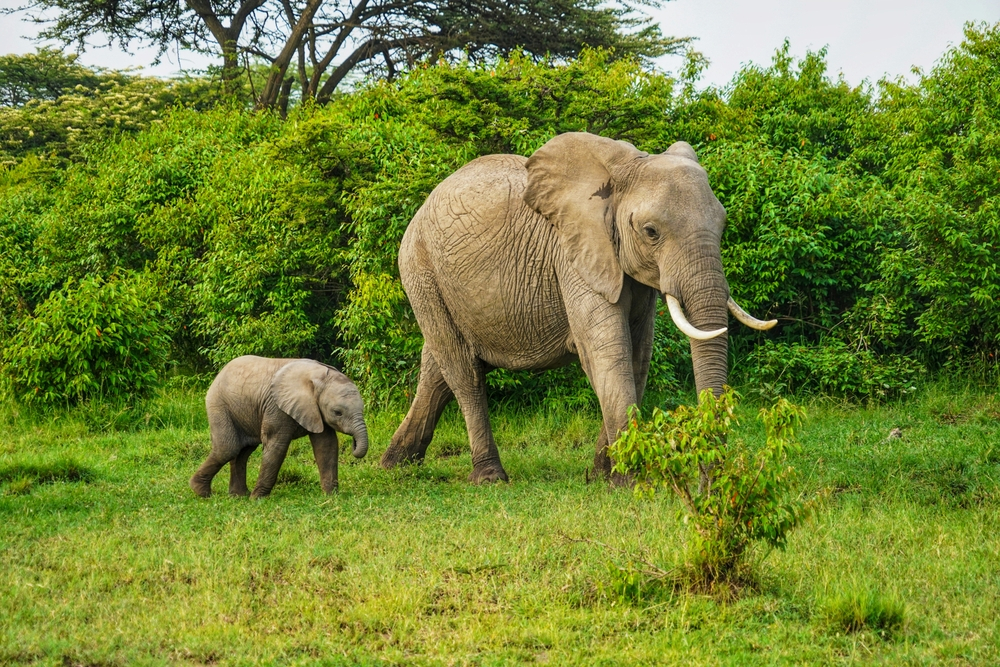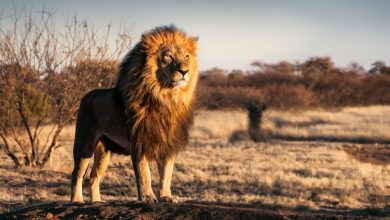From Land to Sea: Cool Facts About Animals You Must Hear

Animals have captivated human imagination and curiosity for centuries, offering a window into the colorful and diverse tapestry of life on Earth. From the majestic elephants that roam the savannas to the mysterious depths of the ocean where anglerfish dwell, the animal kingdom is teeming with fascinating creatures that ignite our sense of wonder.
Understanding the rich diversity of animals is crucial not only for satisfying our curiosity but also for appreciating the intricate balance of ecosystems and the importance of conservation efforts.
In this blog, “From Land to Sea: Cool Facts About Animals You Must Hear,” we aim to take you on an exciting journey across the globe to uncover some amazing facts about a wide array of animals. Whether you’re a seasoned wildlife enthusiast or just starting to explore the wonders of the natural world, this blog is designed to be both informative and accessible.
Expect to learn quirky behaviors, unique traits, and fascinating habits of various animals, while also gaining insights into their roles in their ecosystems. Join us as we delve into the marvels of the animal kingdom and inspire a deeper appreciation for the incredible creatures that share our planet.
Land Animals
Mammals
Mammals are a diverse group of animals that exhibit a range of fascinating behaviors and characteristics. For instance, elephants, the largest land mammals, possess an incredible memory and are known for their complex social structures and emotional depth. Did you know that elephants can recognize themselves in mirrors and exhibit signs of grief when a member of their herd passes away?
Meanwhile, the tiger, the largest of the big cats, is an expert hunter with a unique pattern of stripes that is as distinctive as a human fingerprint. Tigers are solitary creatures but are highly adaptable, thriving in a variety of habitats from dense jungles to swampy wetlands.
Lastly, the kangaroo, native to Australia, stands out with its powerful hind legs and distinctive hopping gait. Kangaroos also have a unique reproductive trait known as embryonic diapause, which allows female kangaroos to pause the development of their embryos until environmental conditions are favorable.
These captivating facts about mammals highlight the extraordinary adaptations and behaviors that make them so intriguing.
Birds
Birds are among the most captivating creatures in the animal kingdom, displaying a variety of remarkable traits and behaviors. Eagles, for instance, are renowned for their sharp vision, which is estimated to be four to eight times stronger than that of humans, allowing them to spot prey from great distances. These majestic birds of prey also build some of the largest nests, sometimes reaching up to 13 feet deep and 8 feet wide!
Meanwhile, penguins captivate us with their quirky behaviors; they are incredibly social animals and often engage in group activities. One of their most endearing habits is tobogganing, in which they slide on their bellies across the ice—a behavior that not only looks playful but also helps them conserve energy while moving across the Antarctic landscape.
Owls fascinate us with their elusive nocturnal lifestyle and impeccable hunting skills. These silent hunters have specialized feathers that muffle the sound of their flight, enabling them to swoop down on prey with astonishing stealth. Additionally, owls can rotate their heads up to 270 degrees, which compensates for their fixed eye sockets and grants them a wide field of vision. With such a diverse array of interesting traits, birds truly enrich our understanding of the natural world.
Reptiles
Reptiles are a diverse group of animals that often surprise us with their unique adaptations and behaviors. Chameleons, for instance, are renowned for their ability to change color, a trait primarily used for communication and temperature regulation rather than camouflage as commonly believed. These fascinating lizards also possess eyes that can move independently, giving them a 360-degree field of vision, which is incredibly useful for spotting predators and prey.
Turtles, on the other hand, have captivated humanity with their longevity and resilience. Some species of turtles can live for over a century, making them some of the longest-lived animals on the planet. One surprising fact about sea turtles is their incredible navigational skills; they can migrate thousands of miles across oceans and find their way back to the exact beach where they were born.
Lastly, the komodo dragon, the largest living lizard, is a marvel of nature with its powerful build and potent venom. These apex predators have keen senses and can detect the scent of carrion from up to 2.5 miles away. Their unique method of hunting involves a combination of strong jaws and toxic bacteria in their saliva, making them incredibly effective hunters.
These intriguing aspects of reptiles highlight the extraordinary adaptations that enable them to thrive in diverse environments.
Sea Animals
Fish
Fish are incredibly diverse, with each species showcasing unique and fascinating traits that make them a vital part of aquatic ecosystems.
Sharks, often misunderstood, are remarkable creatures with some amazing facts that highlight their importance and adaptability. For instance, sharks have existed for over 400 million years, even before the dinosaurs, making them one of the oldest surviving species on Earth. These ocean predators are also known for their impressive senses, particularly their ability to detect tiny electrical fields created by other animals, allowing them to locate prey with astonishing precision.
Clownfish, on the other hand, are famous for their symbiotic relationship with sea anemones. These vibrant fish possess a unique immunity to the anemone’s stinging tentacles, which they use as both a home and a formidable protection against predators.
Adding to the mystery of the deep sea is the anglerfish, with its bizarre and unique features. The most notable characteristic of the anglerfish is the bioluminescent lure that dangles from its forehead, which it uses to attract unsuspecting prey in the dark depths of the ocean. Female anglerfish are also significantly larger than males, who often fuse themselves to females, becoming parasitic mates.
These intriguing aspects of fish emphasize the incredible variety and adaptability that define the underwater world.
Marine Mammals
Marine mammals are some of the most intelligent and charismatic creatures in the ocean. Dolphins, for example, are celebrated for their high intelligence and sociable nature. These playful animals communicate using a complex system of clicks, whistles, and body language, and they can even recognize themselves in mirrors, a sign of self-awareness rare in the animal kingdom.
Whales, on the other hand, are awe-inspiring due to their sheer size and migration patterns. The blue whale, the largest animal ever known to have existed, can grow up to 100 feet long and weigh as much as 200 tons. Remarkably, some whale species undertake lengthy migrations, traveling thousands of miles between feeding and breeding grounds each year.
Meanwhile, sea otters exhibit unique behaviors that set them apart. Known for their adorable appearance and playful demeanor, sea otters use rocks to break open shellfish, showcasing their impressive problem-solving skills. Additionally, they have extraordinarily dense fur, with up to a million hairs per square inch, which keeps them warm in the cold Pacific waters.
These captivating characteristics highlight the remarkable adaptations and behaviors of marine mammals, making them a vital and fascinating component of marine ecosystems.
Invertebrates
Invertebrates make up an astonishingly diverse group of animals, with some of the most intriguing members including octopuses, jellyfish, and starfish.
Octopuses are renowned for their intelligence and remarkable ability to use tools; they have been observed carrying coconut shells to use as shelter, showcasing their problem-solving skills. These cephalopods also possess an extraordinary capacity for camouflage, altering not just their color but also the texture of their skin to blend seamlessly with their surroundings.
Jellyfish, meanwhile, captivate us with their ethereal beauty and ancient lineage, having existed for over 500 million years. Some species, like the immortal jellyfish, have the unique ability to revert to their juvenile form after reaching maturity, effectively bypassing death and restarting their life cycle.
Starfish, or sea stars, display remarkable regenerative abilities; they can regrow lost arms, and in some cases, an entire starfish can regenerate from a single arm. Additionally, starfish exhibit fascinating behaviors such as extruding their stomachs out of their mouths to digest food, allowing them to consume prey much larger than their mouths would otherwise permit.
These fascinating traits and behaviors underscore the incredible adaptability and resilience of invertebrates, making them a vital and captivating component of marine ecosystems.
Conservation Efforts
Conservation efforts are crucial for the protection and preservation of animal habitats, ensuring that diverse species can continue to thrive for generations to come. Protecting these habitats is essential not only for the survival of individual species but also for maintaining the health and balance of entire ecosystems.
Many successful conservation programs have made significant strides in safeguarding wildlife; for example, the World Wildlife Fund’s work with endangered species and the establishment of protected areas have helped stabilize and even increase the populations of certain animals. Additionally, the reintroduction programs for species like the California condor and the black-footed ferret showcase how targeted conservation efforts can yield impressive results.
Readers can actively contribute to wildlife conservation by supporting organizations dedicated to these causes, participating in local habitat restoration projects, and adopting sustainable practices that reduce their environmental impact. By educating themselves and others about the importance of conservation, individuals can play a pivotal role in protecting the planet’s biodiversity.
Conclusion
Throughout our journey “From Land to Sea: Cool Facts About Animals You Must Hear,” we’ve explored the incredible diversity and adaptability of the animal kingdom. From the ancient jaw-dropping history and exceptional sensory abilities of fish, to the impressive intelligence and unique behaviors of marine mammals, and the astonishing resilience and adaptability of invertebrates, each group of animals offers its own set of wondrous characteristics that never cease to amaze. We’ve also highlighted the critical role conservation efforts play in preserving these fascinating species for future generations.
Encouragingly, there’s always more to learn and observe in the natural world. Whether it’s watching birds in your local park, visiting a marine aquarium, or reading up on the latest in wildlife research, the opportunities to expand your knowledge and appreciation of animals are endless. Witnessing animals in their natural habitats can provide profound insights and deepen our connection to the natural world.
We hope this blog post has inspired you to continue learning about the incredible animals that share our planet. We invite you to share your own cool animal facts and experiences in the comments below. Your stories and observations contribute to a greater collective appreciation and understanding of wildlife. Let’s celebrate and protect the wonderful diversity of life that makes our world so extraordinary.




